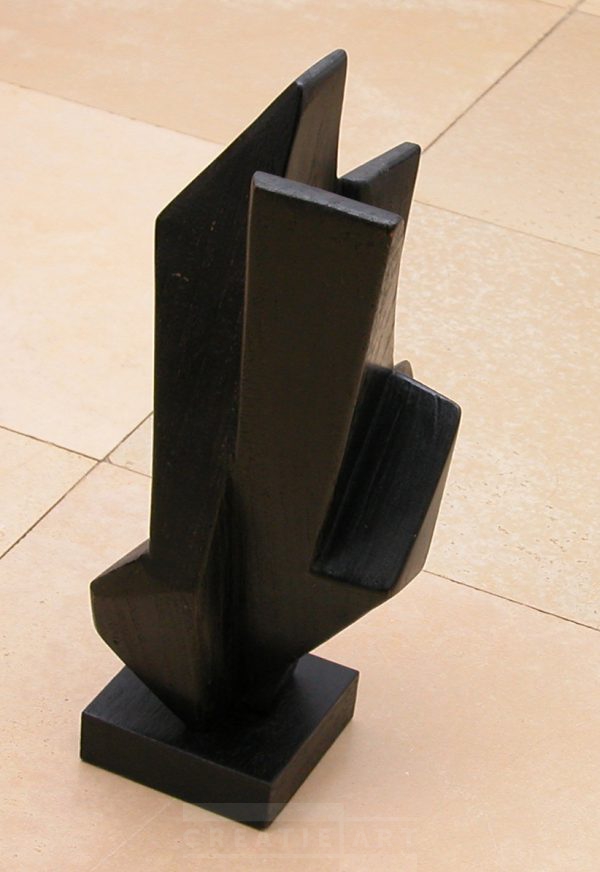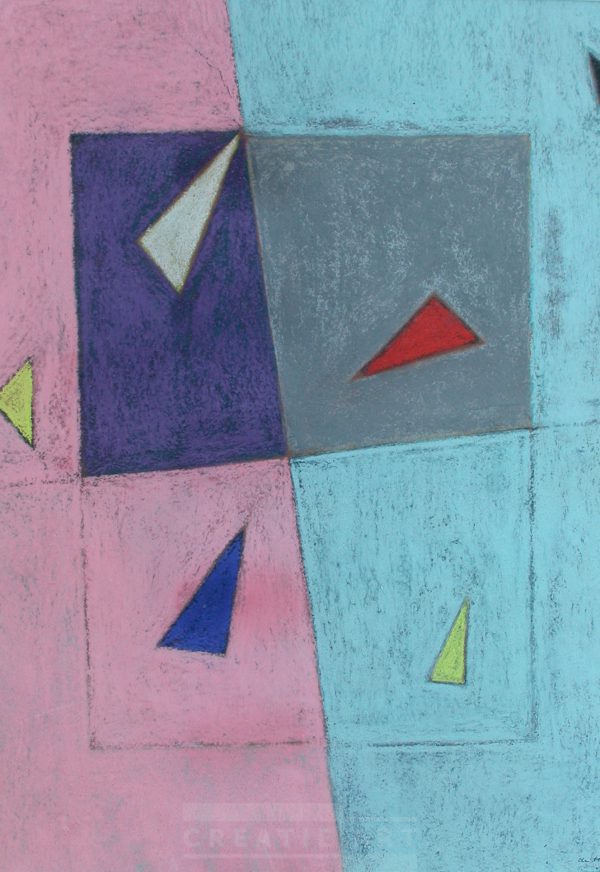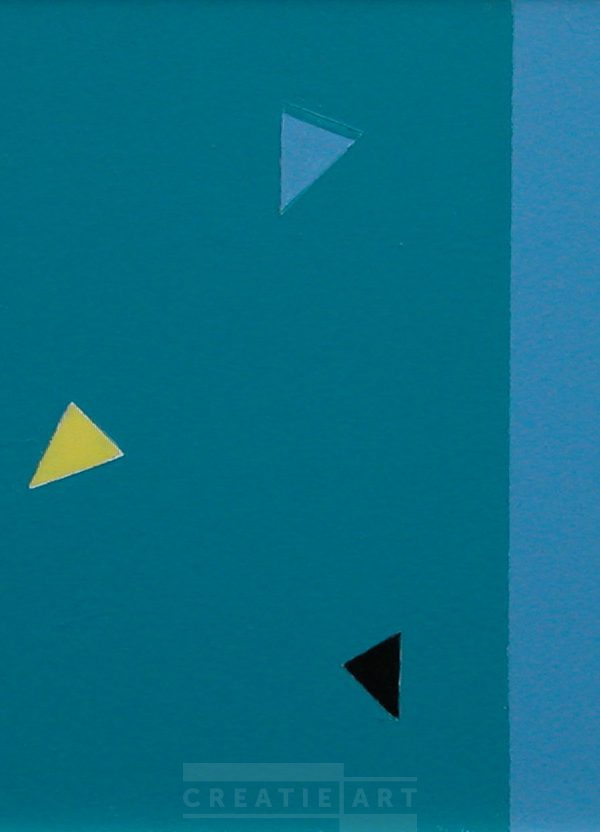1914 Rotterdam
2000 Rotterdam
Pieter de Haard, living in Paris during the 1940s, created an oeuvre partially based on musical rhythms translated into the visual arts. Yet his major interest was in space and infinity, which is already visible in his figurative and expressive pre-war period. In the pastels from 1942-1944 De Haard continued research into the representation of spatial dynamics, until he finally settled for mathematics, it’s natural ratios and the Golden Section in particular; this is not all too surprising when one takes into account that he studied mathematics and philosophy at the Academy of Munich. The oeuvre from this ‘mathematical period’, which started in 1946 and constituted the height of his career, was gradually stripped bare of colour and the compositions became even simpler. Slight hints to the spirituality of the cosmic order were given by what appeared to be linear schemes of stellar constellations or planets floating in vast blue-ish or black planes. However, the oeuvre remained in the realm of the visual language and did not mutate into a spiritual remedy, like Mondrian’s rhythms.


